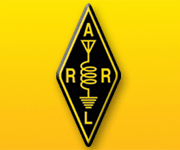Planning Your ARRL Field Day 2020 Operation
14 May 2020
See also Temporary Rule Waivers for 2020 ARRL Field Day 5/28/2020
by Paul Bourque, N1SFE - ARRL Contest Manager
For most of us, ARRL Field Day 2020 is going to look quite different than it did in past years. Considering the impact of social distancing due to the pandemic, many radio clubs and large groups will not gather in their usual Field Day locations this year. Whether you are a seasoned veteran or a Field Day first-timer, there are many questions about how to participate in amateur radio’s largest annual on-air event under these unusual circumstances. Here are some tips and suggestions to help you plan this year’s operation.
Don’t Forget 6 Meters
Remember, Field Day is a non-adjudicated operating event and not a “full speed ahead” contest. It is also not an HF-only event -- all amateur radio bands above 50 MHz may be used during the event.
This includes 6 meters, which often offers significant propagation enhancements in the summer months around Field Day weekend, to help you make contacts. The band is available to amateurs holding a Technician-class license or higher. If you have an HF/VHF/UHF multi-mode transceiver, try making contacts using 6 meters for SSB, CW, or digital contacts. You won’t need fancy beams or large antenna arrays. A simple vertical or dipole antenna will allow you to experience operating on the “Magic Band.”
Activities for Techs
One suggestion for clubs to consider in order to increase participation among their Technician-class members is to schedule specific times where these club members will monitor designated VHF and UHF simplex frequencies for Field Day activity. Keep in mind that the published national FM simplex calling frequencies should be avoided, and the use of repeaters is prohibited. This way, members who have equipment capable of VHF/UHF-only operation may be able to participate from their homes or vehicles. Your club can choose a list of frequencies and scheduled times in advance, and publish them in the club newsletter, or via email or other electronic means before the start of the event.
On the HF bands, Technician-class licensees have CW privileges on 80, 40, and 15 meters, as well as RTTY/data and SSB phone privileges on 10 meters. If you aren’t a CW operator, try calling CQ on 10 meters SSB in the late afternoon and early evening on Saturday and see if conditions are favorable for long-distance communications. Try experimenting with a simple wire antenna for 10 meters -- you might discover that the band can offer plenty of unexpected propagation.
Get Set Up for Digital Modes
You might want to explore one of the newer FT4/FT8 digital modes on 10 meters, 6 meters, or even the VHF/UHF bands. These modes offer an opportunity to make weak-signal contacts when band conditions often do not support voice communications. There have been reports of some great 6-meter openings in recent weeks, and these are likely to occur more frequently as the summer months approach. If you’ve never experimented with digital modes, perhaps this year is an opportunity to give them a try.
If you’ve never used digital modes before, the setup is relatively straightforward. You’ll need a computer, a digital interface to connect the radio to the computer, and you’ll also need to download one of the digital mode software packages such as WSJT-X. Many modern transceivers have built-in support for digital modes, so in those cases, all you’ll need is the proper cable to connect the radio to the computer’s USB port. You’ll need a version of the software that supports the ARRL Field Day exchange (WSJT-X version 2.0 or later, for example). WSJT-X software is available for free download at www.physics.princeton.edu/pulsar/K1JT/wsjtx.html. ARRL’s book Get on the Air with HF Digital (2nd Edition) is also a great primer for anyone beginning to explore the digital modes.
The Excitement of Ham Satellites
Another area you might wish to explore is operating via one of the amateur radio satellites, or “birds,” as they’re often called. Many hams have had success making contacts via the FM satellites by using a VHF/UHF handheld radio and a small handheld directional antenna, or a multi-mode VHF/UHF transceiver for the linear (SSB and CW) satellites. You’ll only be able to work the satellites when they are overhead, so you’ll need to know when they will be visible at your operating location. Visit AMSAT’s Online Satellite Pass Prediction page at www.amsat.org/track/index.php to see which ones will be orbiting overhead, and at what times they’ll be visible. You can find many satellite operating tips and resources at www.amsat.org as well.
An Opportunity for Learning
ARRL Field Day 2020 may be the year you decide to participate solo, or with other members of your household. Perhaps the focus of your activity this year can be to expand your knowledge base and experiment with new modes or bands that you never thought of operating on. If you’re a mentor to a newer ham, Field Day can be an opportunity to share some of your knowledge with them, and for you to expand your own operating horizons. This might be the year to leave your Field Day comfort zone and try something new!
On The Air >> Contests >> Contest Rules >> Field Day >> Planning Your ARRL Field Day 2020 Operation



.jpg)





